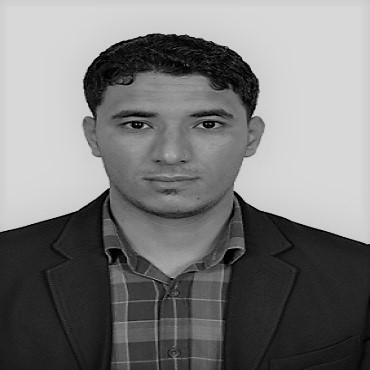Scientific Program
Keynote Session:
Title: Using Easymine-An automatic intelligent model building system to develop products sequential recommendation system
Biography:
Morgan C. Wang is the funding Director of Data Mining Program (funded in 1999) and Professor of Statistics at the University of Central Florida (UCF). He is also an affiliated faculty with the School of Computer Sciences and College of Business Administration at UCF. He couched student teams to win the 2011 and 2012 SAS Data Mining Shootout Contest. He won the best conference award in the First Annual Conference on Engineering and Technology Innovation in 2008. He was the first prize-winner in Data Mining Competition of the 11th SIGMOD KDD (the most predigest data mining competition) conference in 2004 and the first prize winner in Data Visualization Contest of SUGI 25 conference in 2000, and was given invited talks on making intelligent decision based on big data analytics for more than eighty times for American Statistical Association, SIGKDD (leading conference in data mining), International Conference on Information Technology, SAS Global Forum, Well Fargo Bank, Republic Bank, Florida Blue, Disney, Kemper Preferred Auto Insurance, HealthFirst, QFOR, and many companies and universities around the world. He is an member of Ad Hoc Big Data Advisory Committee for the President of American Statistical Association (ASA).
Abstract:
“EasyMind” is an automatic intelligent model building system. This system has five components: data exploration component, data preparation component, model building/validation/selection component, result automatic generation/data scoring component, and model understanding component.
This system has data preparation component that can fix data problems such as missing values, skewness, and high cardinality. In addition, this system has modeling component that can fine tune the model parameters to build a “better” model. Currently, it supports neural network, decision trees, gradient boosting, rand forest and many regression algorithms. After the optimal model selected, the user can further test the model performance or use the selected model to score new data. This system also attempts to open the black box to allow the user to see some insight of the modeling results such as interaction among predictors, important predictors, how to alter predictors to change the predicted values.
This system has successful used on developing sequential production recommendation system for a big bank in China. Instead of recommending one product to its’ potential customer, this system can select an array of products and recommend these products to potential customers. Experiment results have shown that an average of six-fold increasing.
Title: Third millennium cyber security
Biography:
Professor Eduard Babulak, is accomplished international scholar, researcher, consultant, educator, professional engineer and polyglot. His research was successfully published and presented worldwide. He was Invited Speaker at University of Cambridge, MIT, Purdue, Penn State, Yokohama National University, University of Electro Communications in Tokyo and other prestigious academic institutions worldwide. He serves as Editor-in-Chief, Associate Editor-in-Chief, Co-Editor, and Guest-Editor and Reviewer for number of peer reviewed Journals. He communicates in 16 languages and his biography was cited in the Cambridge Blue Book, Cambridge Index of Biographies, Stanford Who’s Who, and number of issues of Who’s Who in the World and America.
Abstract:
The use of Internet today, has become essential for most of the people and somehow contributes to a make life more convenient with easy access and sharing of information at any time, from anywhere with anyone. In some way Internet brought positive as well as negative impacts. Given the ubiquitous connectivity and easy access to Internet, number of financial, government and industrial organizations were subject to security attack(s) from various sources. These events have made big impact on cybersecurity awareness not only for the industrial, business, and government organizations. Cyberspace is often understood as everything related to Internet and computer communications infrastructures. Given the current statistics the Cybersecurity issues are becoming very critical to any organization worldwide. The paper discusses cybersecurity issues and challenges for the Third Millennium. Many countries are developing strategies and policies on how to prevent and avoid any possible cyberattacks and its negative impact on nation’s security and its economic wealth.
Title: RELIEF-Based feature selection for individualized treatment effects
Biography:
Dr. Xiaogang Su is a professor of statistics at the University of Texas at El Paso. He earned his bachelor’s in mathematics from Beijing Normal University in 1995 and his MS/PhD in statistics from the University of California at Davis in 2001. He had worked at the University of Central Florida (UCF) and the University of Alabama at Birmingham since graduation. His statistical research areas include tree-structured modeling, variable selection, machine learning, and precision medicine. He has also done considerable collaborative research in a variety of areas including nursing, transportation safety, dental research, and other biomedical fields
Abstract:
We extend the Relief feature selection technique to precision medicine. The proposed method facilitates a variable importance ranking for covariates in terms of their predictive (vs. prognostic) value in modifying the treatment effects on a binary outcome. Our approach is originally motivated by the case-only analysis in randomized controlled trials, but amazingly it is applicable to both RCT and observational studies owing to the local inference that Relief makes. A statistical interpretation is provided from the machine learning perspective. Our proposed method is especially advantageous in retrospective studies with rare outcomes. We demonstrate its usefulness and efficiency and compare it to other competitive approaches via both simulation and real data applications.
Oral Session 1:
- Machine Learning and Deep Learning | Data Visualization | Data and Knowledge Management | Data Communication and Networking | IoT
Chair
Xiaogang Su
University of Alabama, USA
Title: Adopting Blockchain @IoT
Biography:
Abstract:
Title: RELIEF-Based Feature Selection for Individualized Treatment Effects
Biography:
Dr. Xiaogang Su is a professor of statistics at the University of Texas at El Paso. He earned his bachelor’s in mathematics from Beijing Normal University in 1995 and his MS/PhD in statistics from the University of California at Davis in 2001. He had worked at the University of Central Florida (UCF) and the University of Alabama at Birmingham since graduation. His statistical research areas include tree-structured modeling, variable selection, machine learning, and precision medicine. He has also done considerable collaborative research in a variety of areas including nursing, transportation safety, dental research, and other biomedical fields
Abstract:
We extend the Relief feature selection technique to precision medicine. The proposed method facilitates a variable importance ranking for covariates in terms of their predictive (vs. prognostic) value in modifying the treatment effects on a binary outcome. Our approach is originally motivated by the case-only analysis in randomized controlled trials, but amazingly it is applicable to both RCT and observational studies owing to the local inference that Relief makes. A statistical interpretation is provided from the machine learning perspective. Our proposed method is especially advantageous in retrospective studies with rare outcomes. We demonstrate its usefulness and efficiency and compare it to other competitive approaches via both simulation and real data applications.
Title: Post-quantum security and trust in Blockchain
Biography:
Dr. Yongge Wang received his PhD degree from University of Heidelberg of Germany. Dr. Wang is a full professor at UNC Charlotte. For his academic career, Dr. Wang has published over one hundred peer-reviewed scientific papers that have been extensively cited by his colleagues. Dr. Wang’s academic research focuses on foundation of mathematics, algorithm analysis, computational complexity theory, cryptology (encryption, decryption, and cryptanalysis), fault-tolerant computation, dependable distributed computation, infrastructure protection, secure communications, computer and network security, cloud security, information theory, and post quantum cryptography.
Dr. Wang has extensive experience in technology transfer and his work has long-term impact on information technology industry. Previous to UNC Charlotte, Dr. Wang worked at Certicom (now a division of BlackBerry Limited) as a cryptographic mathematician specializing in efficient cryptographic techniques for wireless communications. Dr. Wang has been actively participated in and contributed to the standards bodies such as IETF, W3C XML Security protocols, IEEE 1363 standardization groups for cryptographic techniques, and ANSI T11 groups for SAN network security standards. Dr. Wang is the inventor of Remote Password Authentication protocol SRP5 which is an IEEE 1363.2 standard and is the inventor of Identity Based Key Agreement protocol WANG-KE which is an IEEE 1363.3 standard. Dr. Wang has also worked with Cisco researchers and American Gas Association researchers to design security protocols for the SCADA industry. Recently, Dr. Wang designed and implemented the post-quantum cryptography encryption technique RLCE which is currently under consideration by NIST for post-quantum cryptographic standards.
Abstract:
The emergence of quantum computers poses as a challenge to the cryptology mechanism based on RSA and ECC (two important asymmetric encryption algorithms), which are currently widely used in public blockchain. Quantum computers can solve prime factorization problem(RSA’s basis) through Shor Algorithm and discrete logarithm problem (ECC’s basis) in a very short time. As a result, a quantum computer’s ability of parallel computing may cause other widely used cryptography mechanisms in the current public blockchain industry to collapse. These potential threats are not theoretical anymore but becoming reality. Professor Yongge adopts a lattice based cryptology mechanism to address the challenges that quantum computers may cause as a long term security solution for public blockchains. Based on current research, lattice cryptography is considered to be the most reliable algorithm against quantum computers due to the lack of a fast solution to the Shortest Vector Problem (SVP) or the Closest Vector Problem (CVP). In order to enhance defensive abilities against threats stemming from network attacks, trojans, virus or malicious users, Professor Yongge utilizes a Trusted Platform Module (TPM) chip with corresponding software to avoid unauthorized manipulation and ensure all calculations, memory, storage and communications are properly monitored and protected.
Title: Automated irrigation management platform using a wireless sensor network
Biography:
Amine Dahne, PhD, is affiliated with the research laboratory in Industrial Computing and Networks (RIIR),University of Oran 1, Algeria. His main research interest includes wireless sensor networks, their security, routing and management, Intrusion detection, and MAC protocols design issues. He is a reviewer of several journals and participates regularly at professional conferences. He received hid PhD degree in Electronics from the university of sciences and technology of Oran (USTO, Algeria)
Abstract:
Agricultural sector is one of the trademarks of Algeria’s economy. Agriculture plays a vital role in the development of the country. But in today's world, agricultural areas are getting reduced due to laziness of mankind in irrigation. But due to population growth and overexploitation, the demand for water is exceeding supply. An algorithm was developed with threshold values of temperature and soil moisture (Rawls and Turq formulas) that was programmed into a microcontroller-based gateway to control water quantity. In this paper, we implement a platform for precision agriculture which allows to collect fundamental physical phenomena (the moisture of the soil, air temperature, humidity, water level, water flow, luminous intensity) required for the precision agriculture, which will be treated to calculate the need for water needed for optimal irrigation. Our platform consists of a sensor/actuator node, a desktop application and a gateway switches relay which controls water pump according to the requirement. Our system is a good starting point for a smart irrigator. Arduino (open source) is used in the design of the prototype model in making the system compact and sustainable.
Title: Quantum inspired automatic image clustering
Biography:
Dr. Siddhartha Bhattacharyya completed PhD from Jadavpur University, India in 2008. He is the recipient of several awards including the South East Asian Regional Computing Confederation (SEARCC) International Digital Award ICT Educator of the Year in 2017. He has been appointed as the ACM Distinguished Speaker for the tenure 2018-2020. He is currently serving as the Principal of RCC Institute of Information Technology, Kolkata, India. He is a co-author of 5 books, co-editor of 30 books and has authored more than 250 research publications. His research interests include soft computing, pattern recognition, multimedia data processing, hybrid intelligence and quantum computing.
Abstract:
Clustering refers to the process of grouping of the elements of a dataset based on the similarity of the underlying features. Existing clustering algorithms requires human intervention in the form of having some a priori information regarding the number of clusters to which a dataset is likely to be clustered. However, this mechanism is not a reliable one especially when it comes to real time situations. Hence, determination of the optimal number of clusters from a dataset on the run is a challenging proposition in the computer vision research community. The process of finding the optimal number of clusters in a dataset so as to have a reliable clustering result can therefore be considered as an optimization problem. Several metaheuristic algorithms are efficient in this regard.
This study introduces some novel quantum inspired metaheuristics which are evolved on the basis of quantum mechanical principles to determine the optimal number of clusters from an image dataset. The evolved quantum inspired metaheuristics have been found to be more efficient as compared to their classical counterparts as far as the time complexity and robustness is concerned.
Title: High pressure assisted infusion of antioxidants in pineapple slices
Biography:
Metasebia Abebe has an academic background in Marketing management and have been working in the banking industry. Currently, she is pursuing her postgraduate in Enterprise management with Xi’an shiyou university. Her research interest focuses on the innovative technologies adoption in the banking industry with a special focus on African market.
Abstract:
Are we putting the cart before the horse?The block chain is one of the emerging technologies about which every media is narrating. Most of the prestigious financial analyst companies are also putting the block chain technology as the soon to be the biggest thing. True it is, block chain is changing the financial system. Perhaps it is making the financial transactions peer to peer getting rid off the third parties involved via cryptocurrency gradually replacing the fiat money. This has facilitated for a more efficient, faster, cheaper and safer transactions. Block chain technology is at the core of how cryptocurrencies work.
According to Dering, One of the four pillars of block chain remains to be connectivity. However, what percentage of the world population is connected remains an issue to be solved for block chain to be effective as fore casted. The UN report of 2017 shows 52% of the world population is still not connected to the world via the Internet. Africa has only 21.8% of its total population connected to the Internet. We conducted a study to assess the awareness and readiness to use cryptocurrency by Africans living abroad using UTAUT model. The result shows, the responses are not as promising at least in near time as the tech companies are forecasting. About 73 % of the respondents responded that they are not ready to use cryptocurrencies to transfer money to their family and relatives in Africa. The following chart shows the statistics and reasons of the respondents.
For block chain and cryptocurrency to bring the aspired socio-economic impact on the lives of people; governments, telecoms and Internet companies, need not to work together and improve the global connectivity coverage as the return is for all stake holders.
Title: Heart disease diagnosis
Biography:
Timz Owen is a final year student at Kabarak university doing computer science. He Runs Facebook and Google Schorlaship as a Program assistant for Andela in training over 30,000 Software Engineers in ALC and DevCWithAndela Training.He is also an Android Engineer certified by google. recently working on Machine learning with Tensorflow. I run Dsc to train university students on recent technologies including Blockchain and AI as they are the current trending technologies.












